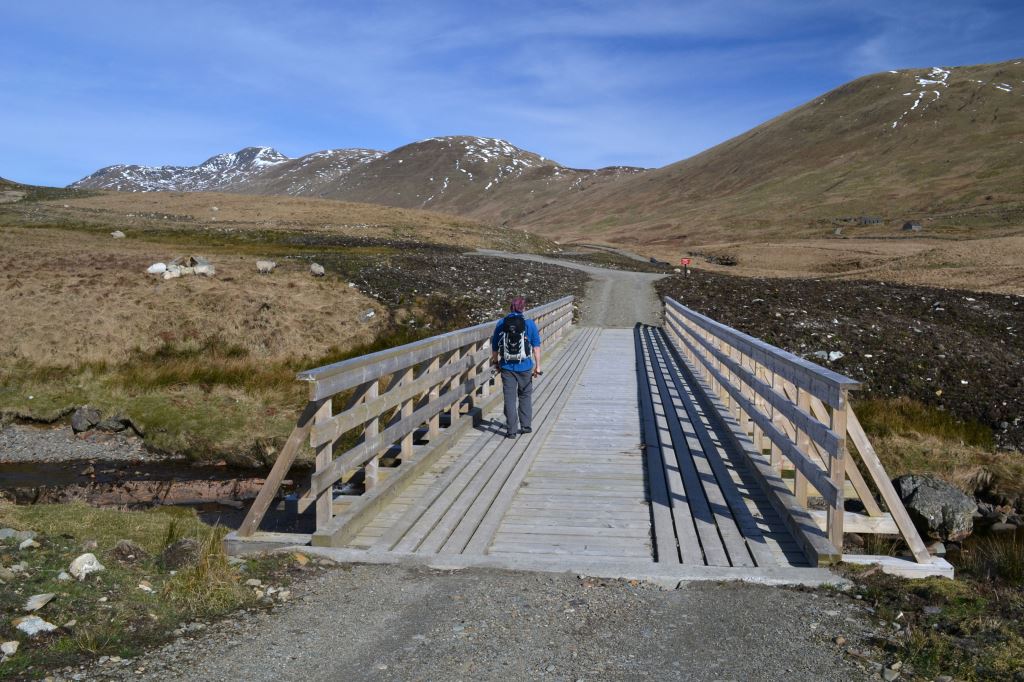
The Munro Society has started to monitor hydro schemes – a very welcome development – and my thanks to Derek Sime who sent parkswatch a number of photos of the Keltie Water Hydro Scheme, situated between Callander and Stuc a Chroin. While the Keltie Water forms the eastern boundary of the Loch Lomond and Trossachs National Park all the development associated with the hydro scheme lies within it. The hydro scheme was originally approved in 2013, revised plans approved in 2014 (see here) and map below and apparently constructed in 2016.
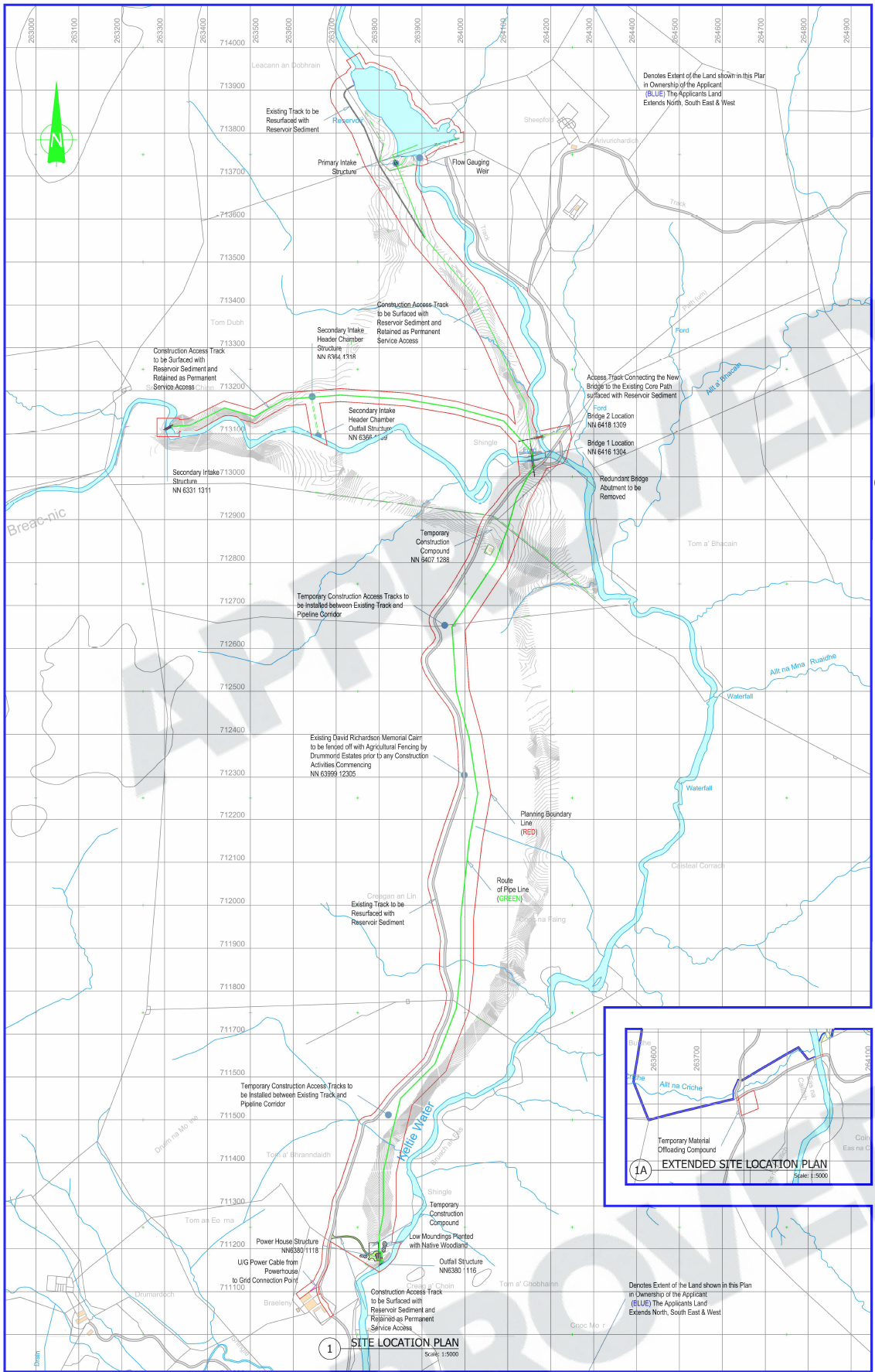
The track up the glen by the Keltie Water from Braeleny farm is the starting point for a number of fine walks, including the southern approach to Stuc a Chroin, along the prominent rounded ridge from Meall Odhar, and a wonderful round from Beinn Each to Meall na Fearna taking in Stuc a Chroin and Ben Vorlich. Derek’s photos, which are mainly of the access track and the pipeline – there are none of the two intakes – show some good and bad things about the hydro scheme but on balance this appears one of the better schemes in the National Park.
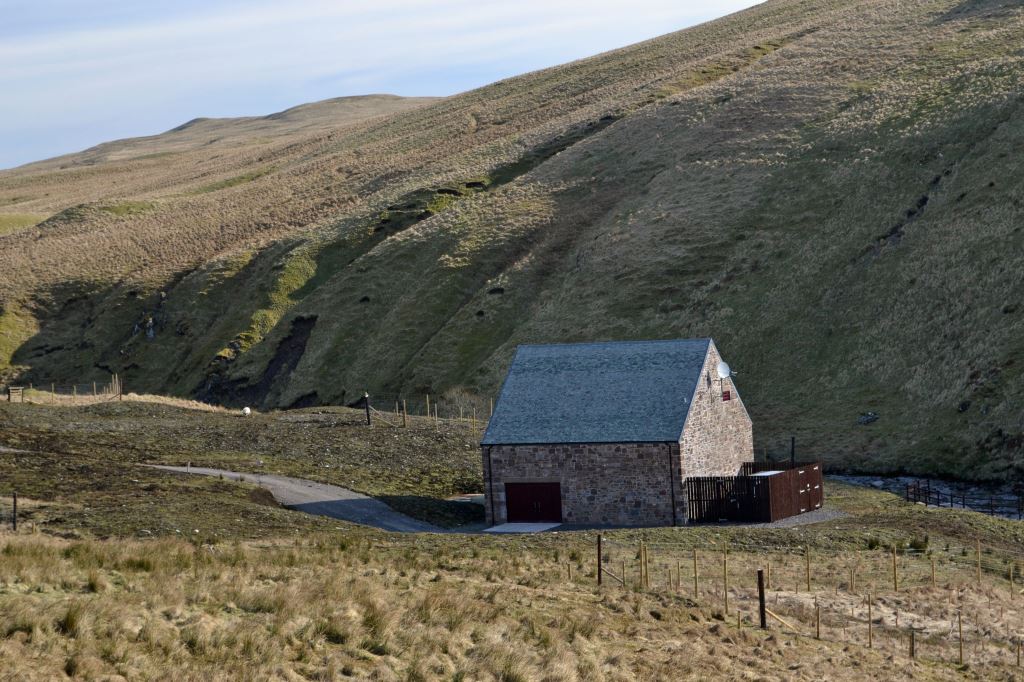
The power house is situated close to Braeleny Farm, has been finished with natural materials and is quite tucked away. It will have almost no landscape impact on the glen, which becomes wide and open higher up. The construction compound to the left of the building has been restored well – from this distance you would hardly know it had been there – and for good measure Drummond Estate have added three blocks of tree planting. While in the wrong place, tree planting can look artifical, not far south of the powerhouse on the far side of the river (outside the National Park boundary) there is a large block of forestry while further south, along the Keltie Water, there is some fine native woodland and the planting here has the potential to link to that.
Generally the LLTNPA has ensured the power house elements of hydro schemes in the National Park have been done well – their planners I think are more comfortable with buildings than landscape – and this is appears a good example.
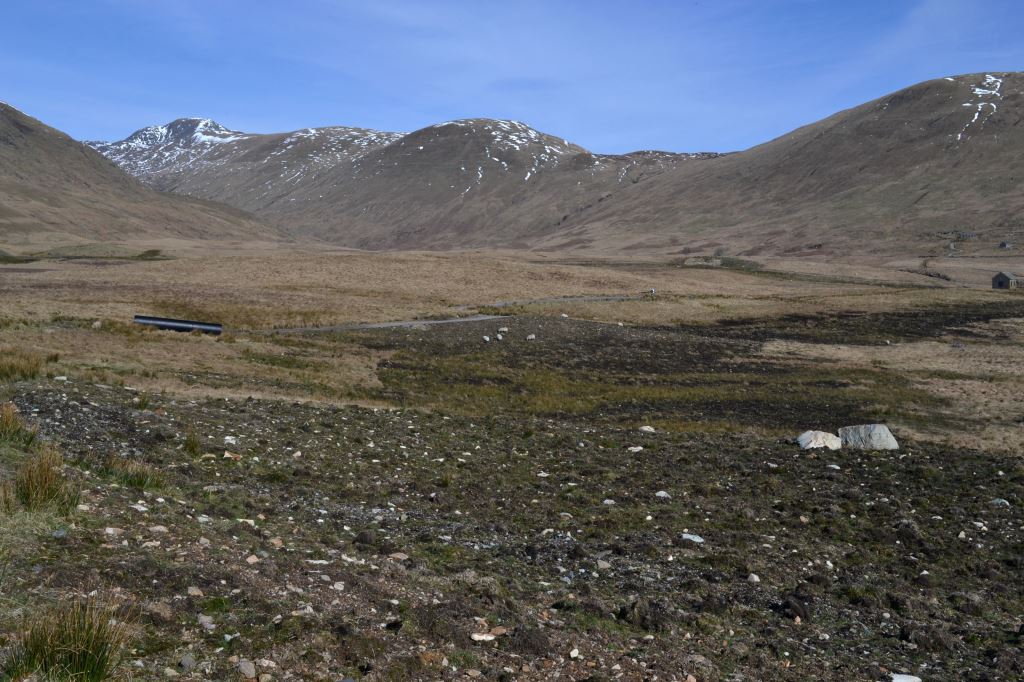
The other element of hydro schemes that the LLTNPA have generally ensured is done well is restoration of the ground in grassland and peatland areas. If peat and turves are removed and stored before the trench for the pipeline is dug, once replaced the ground should recover quickly. A multitude of stones on the surface as along Glen Bruar (see here) is a sign that contractors have mixed up excavations with top soil and vegetation. While you can see some stones on the surface here, generally this section of pipeline restoration appears to have been done well and is likely to recover quickly. In two years it may not be possible to see the line of the pipeline.
The section of pipe on the left of the photo is another matter. It is one of several which appear to have been abandoned as all machinery has been removed from the site and there is no sign of ongoing works. There is no need for this and it is not acceptable. Sadly abandoned sections of pipe are a feature of a number of other hydro schemes in our National Park – its cheaper to leave them in situ than recycle them – including Glen Bruar. (Its also yet another example of why the litter left by a few irresponsible campers needs to be seen in perspective).
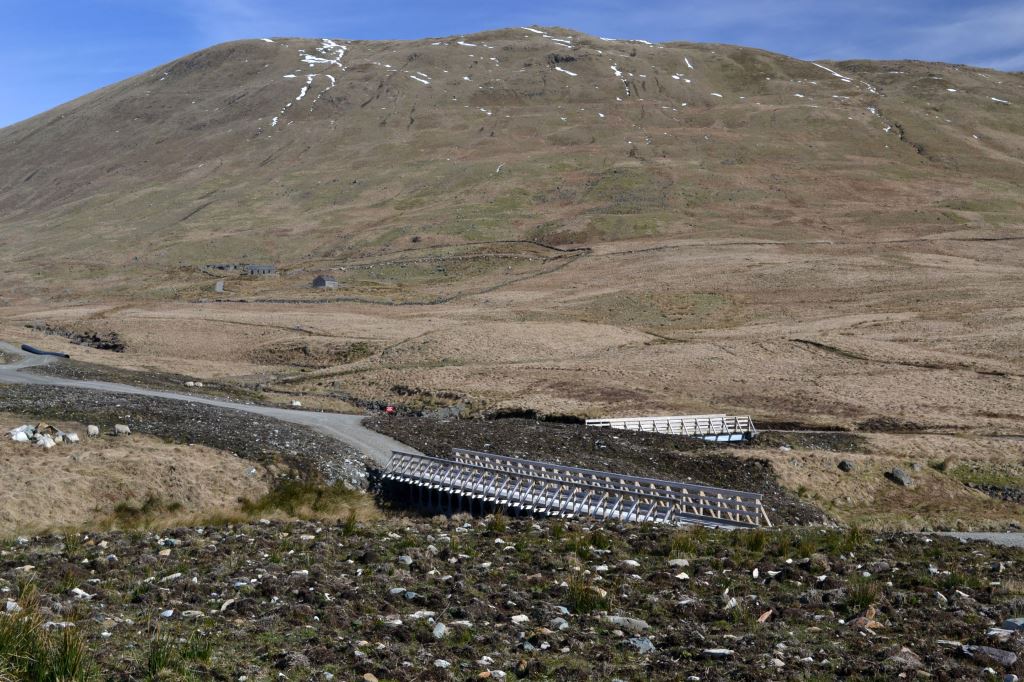
The restoration of the ground just south of the bridge over the Allt Breac Nic and beyond it on the left side of the track appears less successful, with far more stone visible and what appears to be a boulder dump by the sheep on the far left. I suspect part of the reason for this is the ground before the bridge slopes steeply and the depth of soil here was less. Where the soil is shallower its much more difficult to separate vegetation and topsoil from rocks if the work is done by machine as it invariably is nowadays. This is a problem not just at Glen Bruar but on sections of the Beauly Denny powerline. If our National Parks are serious about ensuring the highest standards of restoration I believe they need to consider and support the development of alternative “construction” techniques in areas of shallow soil. Meantime the LLTNPA needs to consider how its going to make the restoration of this area effective.
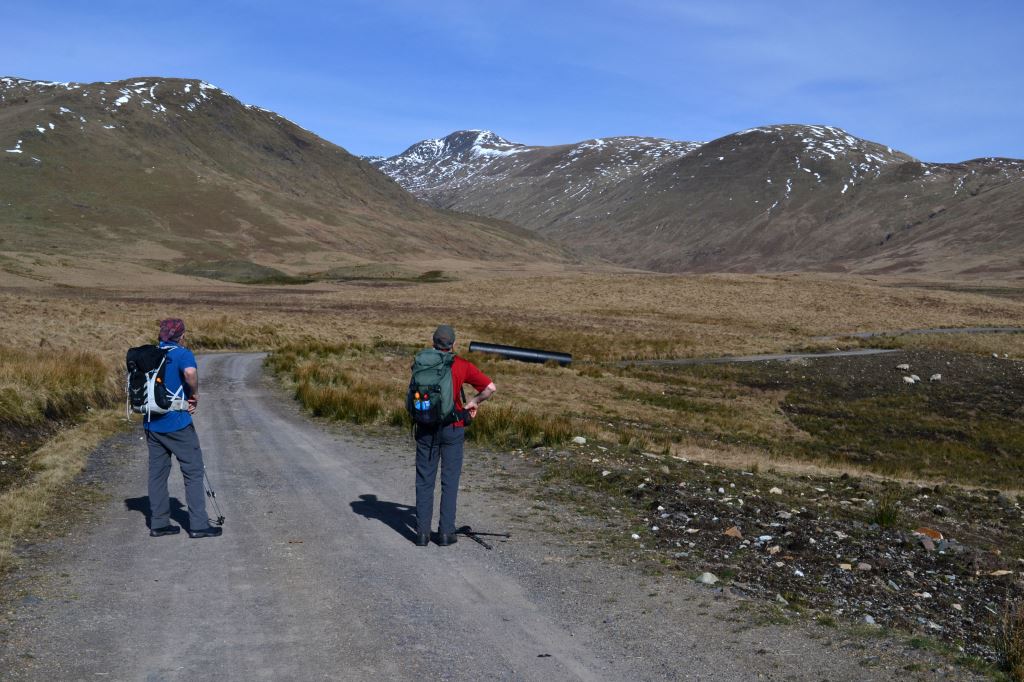
Prior to the construction of the hydro there was an existing track to Arivurichardich. This was upgraded to enable the construction works to take place. Drummond Estate’s planning application asked for the tracks, after restoration, to be 2.5m wide. The LLTNPA, stuck by their Planning Guidance and made the following requirements:
Notwithstanding the approved plans and for the avoidance of doubt these tracks shall be reduced to a width of between 2 metres, and 2.5 metres (at essential turning areas and steep gradients only), (to be agreed in writing by the Planning Authority), and shall have a grassed central strip.
What the photo above illustrates is that this requirement has not been met. This straight section of track is more than 2m wide. You can also see how aggregate from the track has spilled down the slope to the right, broadening it still further. There is no sign of a grass central strip. Perhaps that will be put in place this spring? The problem here is not with the conditions the LLTNPA required in this case, its the enforcement of them.
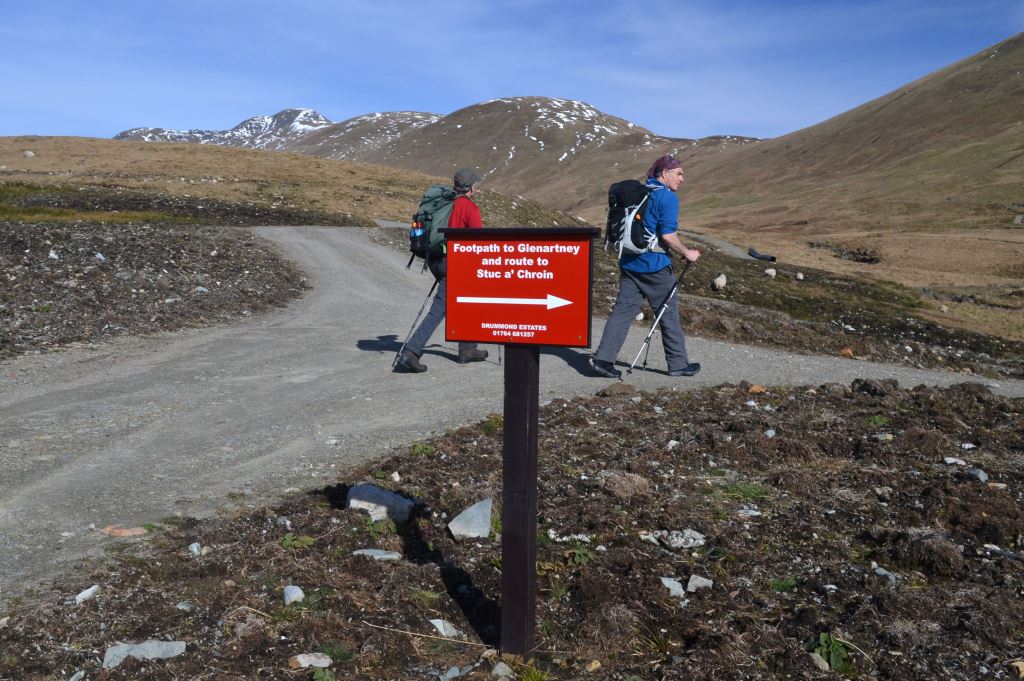
A close up of the area between the two bridges (above) illustrates a number of areas where restoration work could have been better. Left of the track large amounts of stony substrata has been mixed up with the peat and may change the type of vegetation that grows back here . Another piece of abandoned pipe is visible to the right of the sign. The track itself is clearly broader than the 2.5m the LLTNPA allowed for bends and junctions. And, while I am not against all signs – this is part of a core path network – did it really have to be bright red?
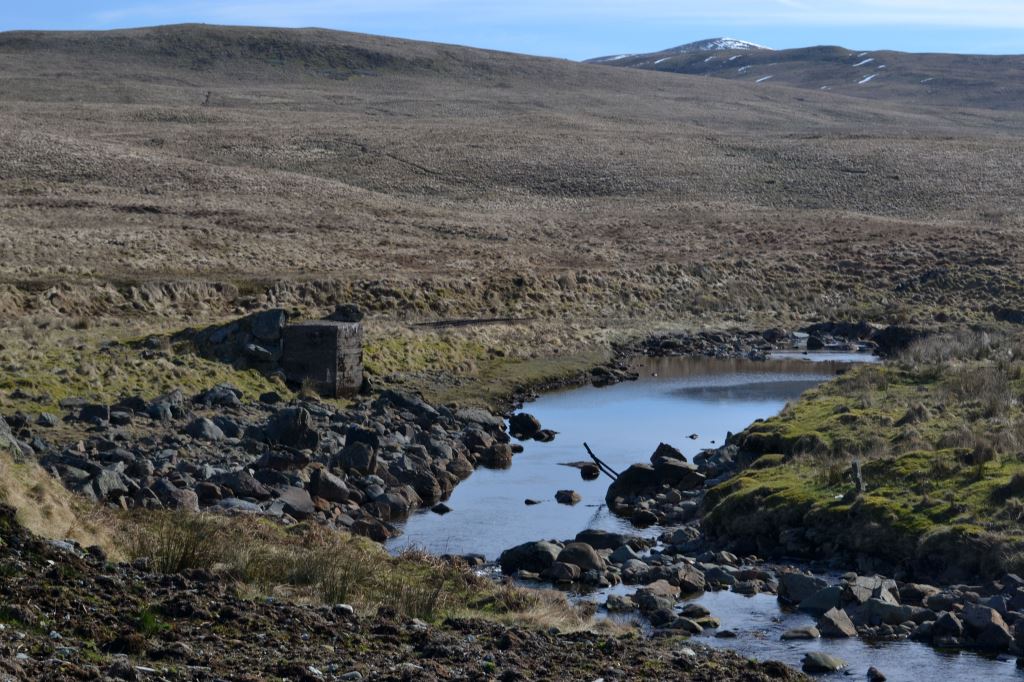
The old bridge south of Arivurichardich (above) over the Keltie Water was washed away on 18 August 2004, during a violent thunderstorm which sat over Stuc a’Chroin, and which was also responsible for sweeping away a number of other bridges in the area, including that on the public South Loch Earn road at Edinample. Since then the Keltie Water has been uncrossable when it has been in spate, and while of course the hydro pipeline will reduce those levels in future, the two bridges help make the area more accessible. This is a benefit on what is part of a core path network.
What Derek Sime’s photos illustrate is that the problems with this hydro scheme is not about its location but about the way its been finished. The officer’s report recommending approval for the scheme is very thorough and show a good appreciation of the landscape:
The site is within an expansive and unspoilt glen comprising a mosaic of sensitive habitats and watercourses featuring unique geological rock formations.
It then recommends a number of specific conditions which I think are welcome. For example, one condition was that the two dam intakes should be finished in local stone. While use of local stone to finish dams forms part of the LLTNPA’s Good Practice Guidance, in reality most dams and intake structures within the National Park have been finished in concrete and no requirements made to abide by the Park’s own guidance. So, the requirement in this case is very welcome. It would be interesting though to see if this has actually happened here – photos please!
It will be interesting too to see hat the LLTNPA does to ensure the other conditions it has made, particularly regarding the width of the track, are enforced. One problem with monitoring all of this – and it will be a challenge to all the Munro Society volunteers who are adopting hydro schemes – is that the LLTNPA is not adding any information to the planning portal once a decision has been made. There is no information publicly available about the Keltie Water hydro scheme since it was finally approved in 2014. Its impossible to see therefore whether Park enforcement have done anything to address the problems illustrated in the photos. The result is if you, I or Munro Society volunteers want to find out what has happened we have to submit Freedom of Information Requests. That is wrong and needs to change.
If, following the People and Places planning consultation, the Scottish Government publishes a new Planning Bill it should include a requirement to make Planning Authorities publish on their planning portals information relating to the implementation of planning consents, including whether planning conditions have been met . One would have hoped a National Park would be doing this anyway. In the case of the LLTNPA it appears it is frightened that if it made this information public, that would expose its failure to take proper enforcement action against landowners.

I come to this area quite often and so followed this development with interest and apprehension, but was well impressed with how it was done. The left behind pipe aside, I find this post somewhat harsh. Pictures of what the awful old track and the intensively grazed ground around it looked like previously would have been useful for perspective. The area between the bridges was landscaped lot later than the pipeline after the second bridge was built so there has been no time for vegetation to re-establish itself yet. The stones are unsightly just now, but this patch was a very thin topsoil on solid rock base to start with, so I can’t see it’s likely that a fundamentally different vegetation will appear here (the original vegetation here was grass and bracken IIRC).
Hi, thanks very much for the comment. I have been up the glen half a dozen times in the last twenty years and checked all my photos and had nothing of what it looked like before. If you are other readers have some do please send them in with some comments. In terms of the “improved” track though are you saying it does meet the standards set by the Park which is maximum 2m width except on bends and steep sections and a grassy middle section? Very helpful to know that the area between the bridges was restored much later. I guess the proof will be how it looks by the end of this growing season – I hope to go sometime this year but if you are up there do please send photos and if you want to send photos and a commentary on this very happy to publish. We need a debate on both where hydro schemes are appropriate and how we make sure that where they are agreed in our National Parks they are constructed to highest possible standards. I would re-iterate though what I said at start of the article and that from the photos looks like one of better hydro schemes in the NP. Nick